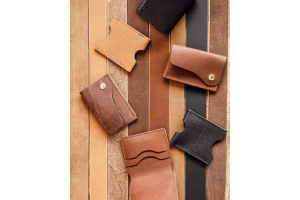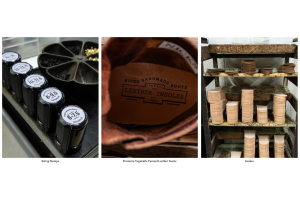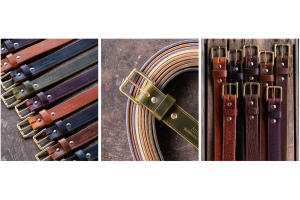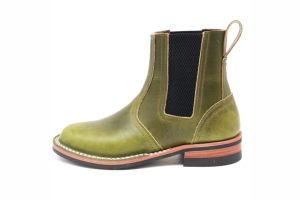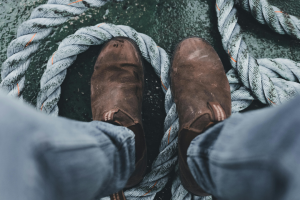What To Look For In Hiking Boots: A Guide To Comfort & Durability

Key Takeaways:
- Boot Type Breakdown: Learn how different types of hiking boots match specific terrains and hiking needs.
- Feature Focus: Understand which features impact comfort and durability the most — from materials to midsole support.
- Fit & Longevity Tips: Get practical tips to ensure a perfect fit and long-lasting performance, avoiding common boot-buying mistakes.
At Nicks Boots, we’ve spent decades building a legacy on the foundation of hard work, master craftsmanship, and American grit. Our boots are handmade in Spokane, WA, by skilled bootmakers using premium materials and time-honored techniques. We don't just make boots — we build tools for those who demand performance, durability, and timeless style, whether on the job or on the trail.
When it comes to hiking, your footwear is more than just gear — it's your foundation. The right pair of hiking boots supports every step, shields against injury, and stands up to the miles. With so many options out there, it can be tough to know what truly matters when choosing a pair. From navigating rocky trails to pushing through long-distance treks, your boots need to work as hard as you do — and they need to last.
In this guide, we’ll break down exactly what to look for in hiking boots, focusing on the two qualities that matter most: comfort and durability. Whether you're a seasoned backpacker or just getting started on the trail, this piece will help you make an informed, confident choice.
Why Choosing The Right Hiking Boots Matters
When it comes to hiking, your boots can make or break the experience. The right pair will support your feet over long distances, protect against injuries, and keep you comfortable across various terrains and weather conditions. On the flip side, the wrong boots can lead to blisters, sore muscles, twisted ankles, or even long-term foot issues.
Comfort and durability are more than just buzzwords — they’re essential for maintaining performance on the trail. Whether you're tackling a weekend hike or a multi-day backpacking trip, the right boots will ensure you stay focused on the journey, not the pain.
Investing in proper hiking footwear is also a smart long-term move. It helps reduce wear and tear on your joints, especially knees and ankles, and ensures you don't have to replace your boots after just one season.
Ready to invest in boots that are built to go the distance? Explore our handcrafted hiking boots — made in the USA for comfort, durability, and performance on any trail. Shop Hiking Boots and gear up for your next adventure.
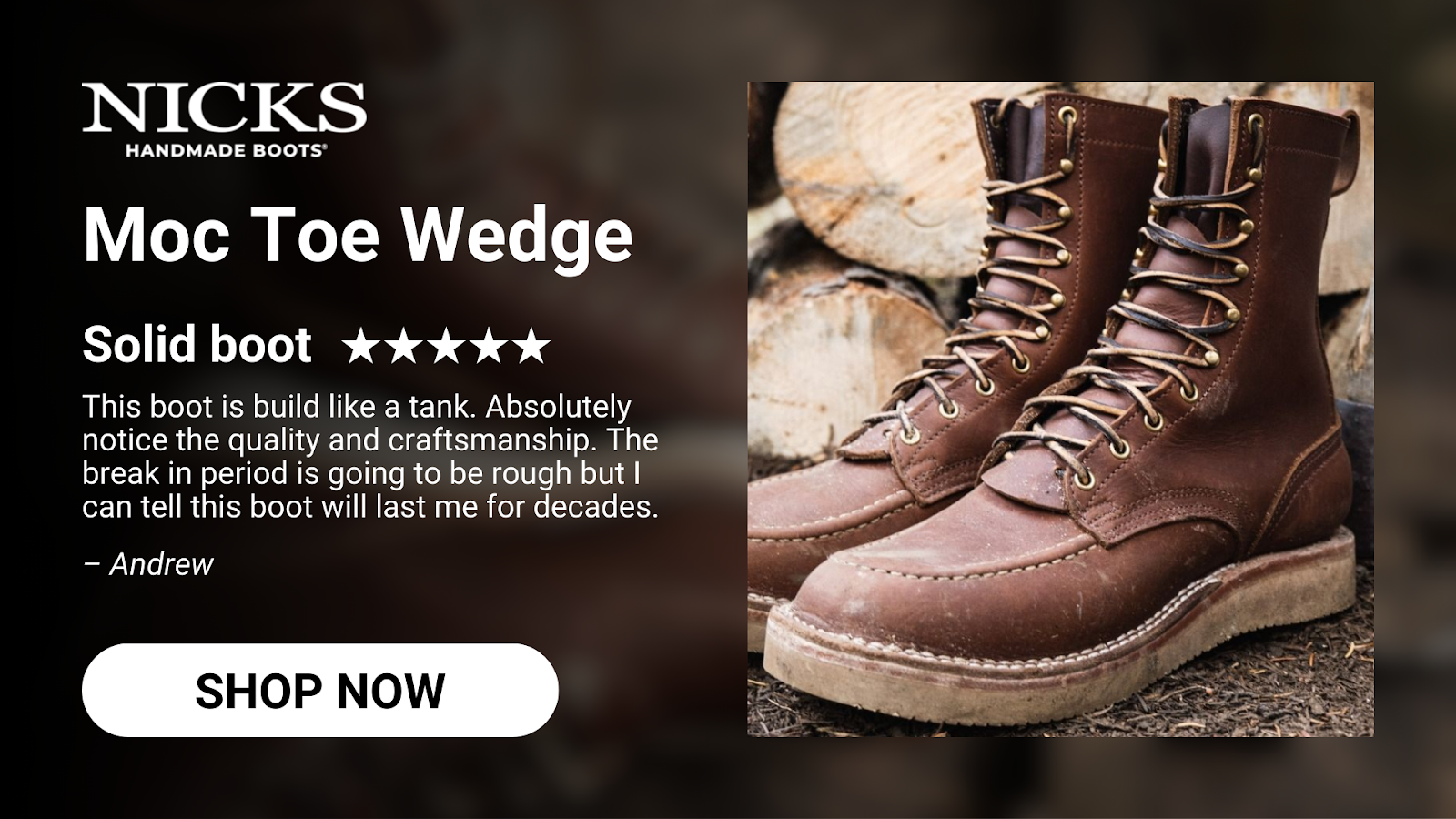

Understanding The Different Types Of Hiking Boots
Not all hiking boots are created equal — the best choice depends on the kind of hiking you plan to do. Here are the main types:
Hiking Shoes
Lightweight and flexible, hiking shoes are ideal for day hikes on well-maintained trails. They offer comfort similar to running shoes but with better grip and support for uneven terrain.
Day Hiking Boots
These mid-cut boots provide more ankle support than hiking shoes and are suitable for short to moderate hikes with light loads. They're great for beginner to intermediate hikers. Check out the Ridgeline Hiking Boot by Nicks Boots. It's built for comfort and performance on day hikes — with the durability to handle tougher terrain when needed.
Backpacking Boots
Backpacking boots are heavier and stiffer, built for multi-day hikes and rough terrain. They offer maximum support and protection for carrying heavy packs over long distances. Explore the Overlander Boot by Nicks Boots—designed for endurance, stability, and harsh conditions, it’s a solid choice for serious hikers.
Mountaineering Boots
Designed for extreme conditions, these boots are made for snow, ice, and rocky, alpine environments. They're typically insulated, crampon-compatible, and extremely durable — but not necessary unless you're tackling serious climbs.
Key Features To Look For In Hiking Boots
When shopping for hiking boots, there are several essential features that directly impact comfort, performance, and durability. Here's what you should pay close attention to:
Material
Boots come in a variety of materials including full-grain leather, split-grain leather, nubuck, and synthetics like nylon or polyester. Leather offers durability and water resistance, while synthetics are lighter and break in faster but may wear out quicker.
Waterproofing
Look for boots with waterproof membranes like GORE-TEX® or eVent®. These help keep your feet dry in wet conditions while still allowing breathability. However, note that waterproof boots can sometimes trap heat, making them less ideal for hot climates.
Sole And Traction
The outsoles should offer deep, aggressive lugs for strong grip and stability on uneven or slippery terrain. Vibram® soles are widely respected for their durability and traction.
Midsole & Cushioning
This layer provides shock absorption and determines the boot’s stiffness. EVA (soft and lightweight) and polyurethane (firmer and more durable) are common materials. Choose based on how much cushioning and support you need.
Ankle Support
Boots come in low-, mid-, and high-cut designs. Higher cuts offer more ankle support, which is especially useful when carrying a heavy backpack or traversing rocky paths.
Toe Protection
A reinforced toe cap can protect against stubbing and impacts from rocks or debris — a small feature that makes a big difference over long hikes.
How To Ensure A Comfortable Fit
Even the most high-tech hiking boots won’t perform well if they don’t fit your feet properly. Comfort starts with the right fit — here’s how to make sure you get it right:
Try Boots On Later In The Day
Feet naturally swell throughout the day, especially during hikes. Trying on boots in the afternoon or evening mimics how your feet will feel on the trail, helping you avoid a snug fit that turns painful after a few hours.
Wear The Right Socks
Bring along the type of hiking socks you’ll wear on the trail. Wool or moisture-wicking synthetic socks are best — they cushion your feet and help prevent blisters. Avoid cotton.
Check For Room In The Toe Box
You should be able to wiggle your toes freely. A cramped toe box can lead to numbness or black toenails on downhill hikes.
Ensure A Snug Heel Fit
Your heel shouldn’t lift when you walk. Excess movement here causes friction, which leads to blisters. A snug heel prevents slipping without being too tight.
Walk Around And Test
Take your time walking on different surfaces if possible — many outdoor stores have ramps or rough surfaces to simulate trail conditions. Pay attention to any pinching, rubbing, or hot spots.
Break Them In
Even a good fit can feel stiff at first. Wear your boots on short walks or errands before hitting the trail to break them in and mold them to your feet.
Durability: What Makes A Boot Last
Durability is a critical factor, especially for hikers who spend a lot of time on rugged trails. A well-built pair of hiking boots can last for years if made from quality materials and constructed properly. Here’s what to look for:
Quality Materials
Full-grain leather is the gold standard for durability. It’s naturally tough and resistant to abrasions, making it ideal for long-term use in rough conditions. Synthetic materials can still be durable but tend to wear down faster than leather.
Stitched Or Cemented Construction
Look at how the sole is attached to the boot. Stitched soles (especially Goodyear welted) are generally more durable and can sometimes be resoled, while cemented soles (glued) are lighter but may separate over time with heavy use.
Reinforced Areas
Toe caps, heel guards, and extra layers in high-wear zones improve the boot’s lifespan. These reinforcements protect the boot’s structure and help it hold up against rocks, roots, and harsh terrain.
Replaceable Components
Some higher-end hiking boots come with replaceable outsoles or laces. This can greatly extend the life of the boot if the upper remains in good shape.
Care And Maintenance
Even the toughest boots won’t last without proper care. Cleaning off mud, drying them properly, conditioning leather, and storing them in a cool, dry place all contribute to longevity.
Additional Tips For Buying Hiking Boots
Beyond the core features and fit, there are a few extra tips that can make the buying process smoother and more effective:
Shop In-Person When Possible
Trying boots on in a store gives you the chance to feel them out before committing. Online reviews can’t replace firsthand experience — especially when it comes to comfort and sizing.
Do Your Research
Read reviews, compare brands, and pay attention to customer feedback about long-term use. Some boots look great out of the box but don’t hold up after a few months of wear.
Consider The Terrain
Buy boots based on where you’ll hike most often. Rocky trails, muddy paths, snowy routes, or desert hikes each call for different types of soles, insulation, and waterproofing.
Think About Weight
While heavy boots often mean more support and durability, they can also cause fatigue over long distances. Aim for a balance between sturdiness and weight based on your hike type.
Don’t Skip The Break-In Period
Even if the boots feel good in-store, give yourself time to break them in gradually. Wear them around the house or on short local walks before heading into the backcountry.
Invest In Insoles If Needed
Aftermarket insoles can improve arch support, heel cushioning, and overall comfort. They’re a great option if the boot is high-quality but doesn’t quite match your foot shape.
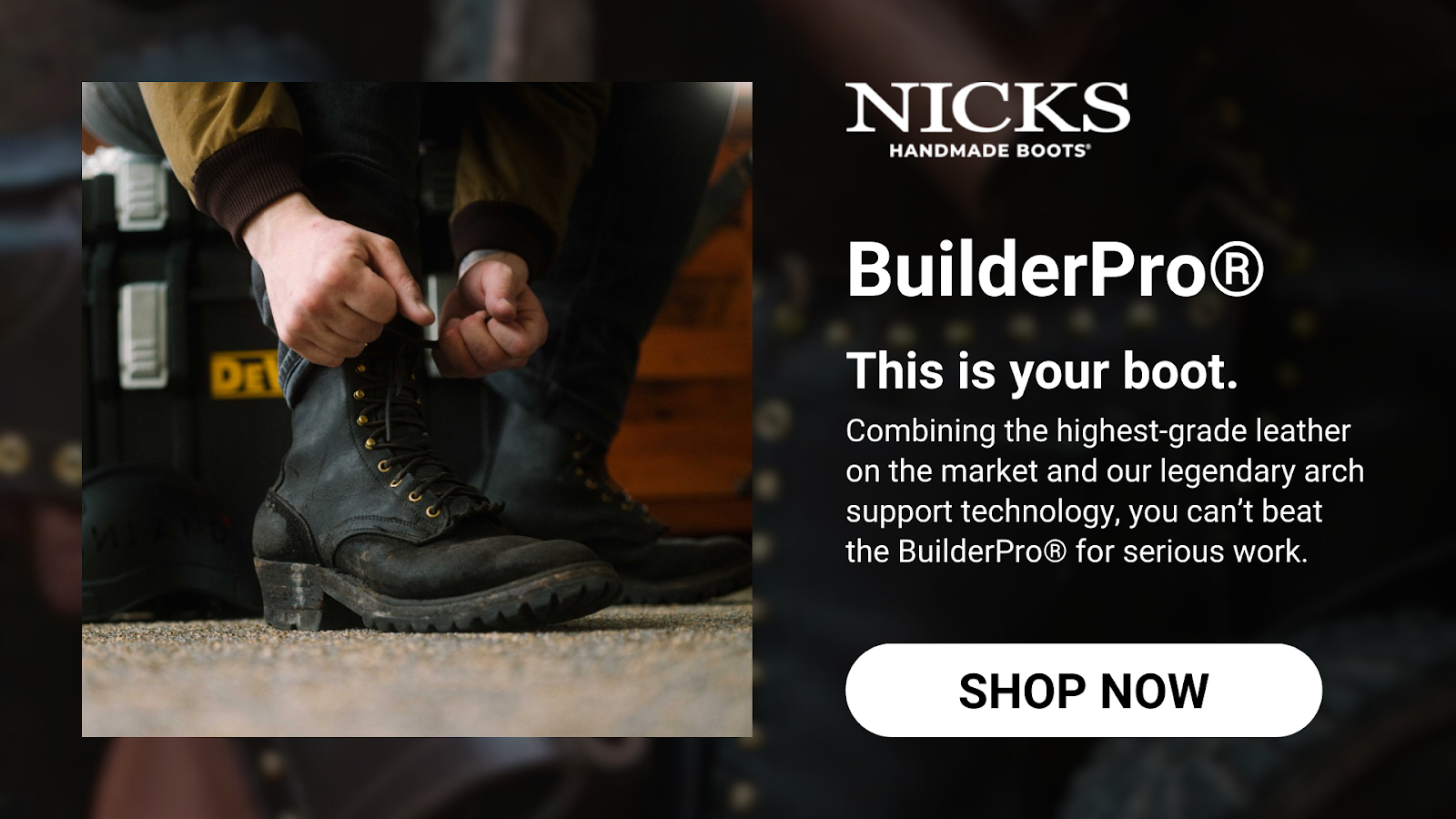

Final Thoughts
Hiking boots are more than just outdoor gear — they’re the foundation of every safe, comfortable, and enjoyable hike. Choosing the right pair requires a mix of self-awareness, research, and a little patience. Think about where you hike, how often you go, and what your feet truly need in terms of support, protection, and comfort.
While a good pair of boots might cost more upfront, they can save you from costly injuries, miserable experiences, and constant replacements. Prioritizing comfort and durability isn’t just smart — it’s essential if you want to enjoy the journey as much as the destination.
So take your time, try different pairs, and don’t settle. When you find the right hiking boots, you’ll know — because your feet will thank you after every mile.
Read Also:
Frequently Asked Questions About Hiking Boots
Can I use trail running shoes instead of hiking boots?
Yes, for light hikes on well-maintained trails, trail running shoes can be a good alternative. They’re lighter, more breathable, and break in quicker, but they lack ankle support and rugged durability for rough terrain.
How often should I replace my hiking boots?
Most hiking boots last between 500–1,000 miles depending on the terrain, usage, and care. If you notice sole separation, poor traction, or declining support, it’s time for a replacement.
Do hiking boots need to be waterproof?
Not necessarily. Waterproof boots are useful in wet or cold conditions, but they can trap heat in warmer climates. Breathable, non-waterproof boots may be better for dry, hot environments.
Can I hike in winter with regular hiking boots?
Only if the boots are insulated and weatherproof. Otherwise, you’ll need winter-specific hiking boots or mountaineering boots to stay warm and dry in snow or freezing conditions.
Should I size up in hiking boots?
Slightly, yes. Many hikers go up half a size to accommodate foot swelling and thicker socks. Just ensure there’s no heel slippage or excessive toe movement.
Are vegan hiking boots available and reliable?
Absolutely! Many brands now offer vegan hiking boots made from synthetic materials. They're typically lighter and more breathable, though durability may vary by model.
Can orthotics or custom insoles be used in hiking boots?
Yes, most hiking boots have removable insoles, allowing you to insert custom orthotics or more supportive aftermarket insoles for improved comfort.
What’s the difference between men's and women's hiking boots?
Women’s hiking boots are generally designed with a narrower heel, smaller instep, and lighter weight. However, fit should be based on foot shape more than gender.
Are expensive hiking boots always better?
Not always. While higher-end boots often offer better materials and construction, the best choice depends on your hiking needs and personal comfort. Fit and intended use matter more than price tag alone.
How do I properly clean and store my hiking boots?
Brush off dirt, rinse with water, and use mild soap if needed. Let them air dry completely (no heaters!), and store in a cool, dry place. Conditioning leather occasionally helps maintain flexibility and prevent cracking.
